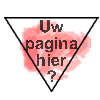Katrien Caymax
(Born at Meeuwen, Belgium in 1951)
Katrien
Caymax dedicated her adult life completely to art. She studied graphics
and painting in Hasselt a provincial town in eastern Belgium- and
after her studies she went regularly abroad for lengthy periods.
Itinerant life
In 1973 she lived two years in Morocco. This meant a first acquaintance
with the Andalusian culture and Spanish friends initiated her in the
Mediterranean way of life. Since then the Spanish language and culture
are part of her life. In these days there were exhibitions of her work
in Melilla, Rabat and Malaga.
Later she spent much time in a small
village, hidden in the Picos de Europa, a mountain range on the Spanish
Atlantic coast. She worked for a time in Switzerland and opened a
printer¹s workshop in Brussels. The Swiss éditeur Schindler presented
her work at the ART in Basel and undertook the distribution of it in
Switzerland and Austria.
Initially her engravings were made
up in a severe black-an-white style. She started looking for more
colours and saw herself confronted with the limitations of the
traditional etching-techniques. During these years of search and
travel, she studied for a while at the university of Beograd, where she
learned about the basics of colour-graphics. She worked with very
experienced printers like Craig Zamiello from New York and Ludo Dooms
from Brussels.
Innovating graphics
Katrien Caymax has always liked to try out new methods in order to
improve her technique. Sometimes she even went to industrial
specialists in surface-treatment in order to find answers for her
technological questions. Step by step she developed a completely new
process for making colour-etchings. This unique system was a real
innovation in graphic arts. Her colourful prints with their pictorial
atmosphere made a great impression on galleries and the general public.
Working in colours led her in the
middle of the eighties to painting. The dimensions of her work also
increased. In this period she mainly used gouache and the ancient
tempera techniques.
At the end of the eighties her
itinerant life came to an end and she installed a workshop in the
neighbourhood of Antwerp. Here she started to produce a extensive
series of colour etchings, some of which changed people¹s outlook on
graphics as an art form. (For instance: "The little lover" and "La
belle Hélène".)
From 1991 on her work was exhibited
at important art fairs in Germany, France and New York. There were
expositions in London and even more in Germany, in which the editor de
Bernardi from Aachen played a mayor part. In 1999 a survey of her
thirty years as a print-maker was exhibited in Museum Kempenland at
Eindhoven (the Netherlands).
Women as self-image
From a merely technical point of view, Katrien Caymax is very ingenious
and she uses a lot of skills in order to achieve what she wants. On the
other hand, her style and themes have been the same throughout her
career. The public immediately recognizes her strong, flowing line and
the clear palette of colours she uses. Her oeuvre is frankly
figurative. The female figure is the main theme of her work: seductive
women, tender women, rejecting women all states of mind are present in
it. All of them are the personification of an artist with a sensitive
mind.
Katrien Caymax aims for a sobriety
of the forms, which enhances the effect of the colours. Her works are
remarkable for their solid drawing and their intense styling.
Her ironical approach and her
deceptively naïve drawing hide the deeper meaning of Caymax s work.
Peter Thoben, conservator of the Museum Kempenland at Eindhoven puts it
as follows: The formal language she uses is strongly two-dimensional
and the representation is somewhat deformed, with heavy stress on the
lines and the planes. Art critic Stefaan Siffer writes: The works of
Katrien Caymax show a very deceitful simplicityIt gives her paintings
and drawings something familiar at first sight The power of her work
is due to the simplicity of several layers, that form together a web of
stories without words or scenario, of imagination and existential
self-questioning
Selection of individual expositions
Galerie Embryo Leuven (B) 1995 1997 1999 2003
Cultureel centrum Leopoldsburg (B) 1995 2000
Galerie Szymon Antwerpen 1995 1996 1997
Galerie Dimmers Brussel 1995 1996
Galerie 88 Bensheim(D) 1995
Galerie Polyprint Wuppertal (D) 1995
Blackheath Gallery London 1996
Zella Art Gallery London 1995 1997 1998 1999 2000
Musée René Carcan Brussel 1996 2004
Kunst und Museumkreis E.V. Bad Essen (D) 1996 2003
Kunsthandel Marcel Jas Breda (N) 1996 1997 1999 2001 2003 2004
Cercle Artistique Waterloo 1997
Galerie F.Ogurek Lohmar (D) 1997
Musée Denon Chalons-Sur-Saone (F) 1997
Galerie Elzenheimer Schwalbach (D) 1997
Galerie Exelmans Maaseik (B) 1999
Museum Kempenland Eindhoven (N) 2000
Id Plus Art Center Hamme (B) 1999 2002 2005
Galerie Kunst en Kader Veldhoven (N) 2003
SD Worx Antwerpen 2001
Galerie de Bernardi Aachen (D) 1992 1996
Galerie Angle Aigu Brussel 1992 1994 1996
E. Traets Art Gallery 1991 1993
Galerie CGH Hasselt 2005
Galerij Epreuve dartiste Antwerpen 2000 2004
Galerie Kunst & ambacht Eindhoven (N) 1994
Galerie Quadro Aarschot 2003
Galerie Van Campen Antwerpen 2004
Van Meenen Harelbeke 1996
Galerie Art Connection (Basel) 1987
Galerie Hôtel de Ville (Genève) 1985
Masereelcentrum (Kasteerlee) 1989 1994
Kunstforum Schelderode 1982 1983
De oude Barrier Hasselt 2006
Jakob Smitsmuseum Mol 2006
Selection of collective expositions
Alliance Française (Rabat)
Salon dAutomne (Parijs)
Galerie Kunstforum (Schelderode) 1995
Buck und Graphikmesse (Frankfurt) 1995 1996 1997 1999
Multiple Düsseldorf 1995 1996 1997 1998 1999
Stedelijk Museum ST. Niklaas (B) 1996
Blackheath Gallery London 1997 1998
Galerie De Bernardi Aachen (D) 1997 1999 2002 2003
Stedelijk Museum Aalst 2005
Holland Art Fair (N)
Art Expo (New York)
Mutsuko Murota (Osaka)
Art (Basel)
Graphik Bienale (Krakow)
Kunsthandel Marcel Jas Breda (N) 2006
Museum De Boterhal Hoorn (N) 2006
|
|

